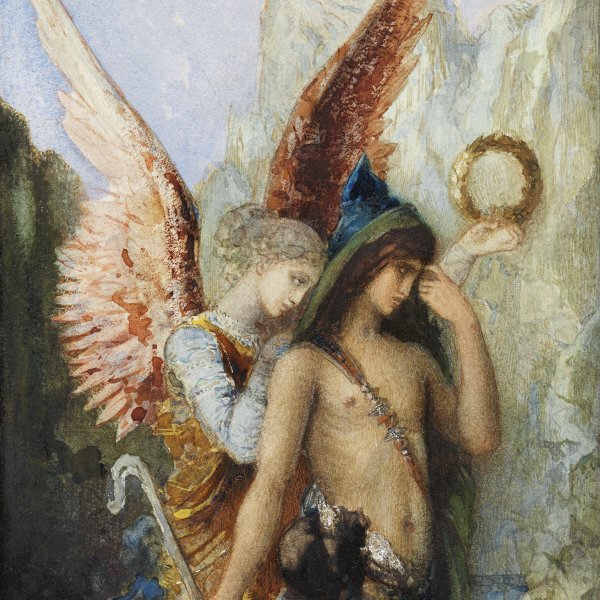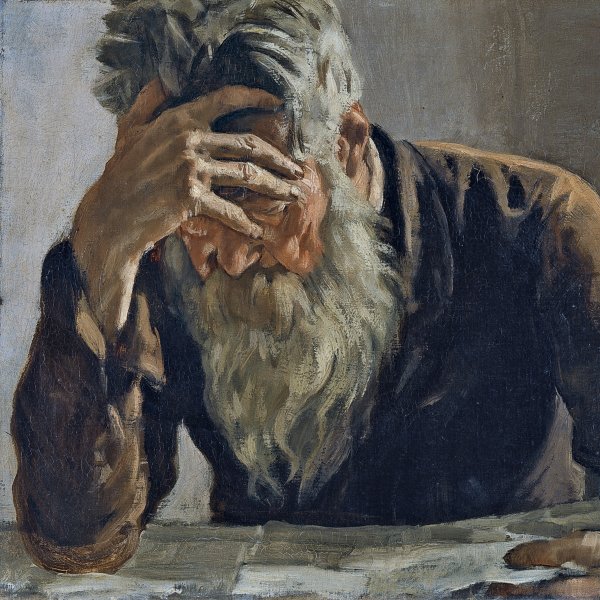Pan chasing a Nymph (verso: A Nymph at the Fountain)
Although the first small Alpine landscapes by the Swiss painter Arnold Böcklin display the influence of the German artist Caspar David Friedrich, the works executed after his first stay in Italy in 1850 show a shift towards a Romanticism tinged with classical influences and an increasing allegorical component that later evolved towards Symbolism. In these evocative landscapes imbued with symbols, inhabited by spirits of the forest or figures borrowed from classical mythology, the painter aimed to represent the internal forces of nature, his fears and his dreams. Furthermore, although Böcklin was generally more interested in literary aspects and showed limited concern for technical questions, in Italy his palette became lighter and his execution looser, while his knowledge of Pompeian painting encouraged him to experiment with new techniques.
A Nymph at the Fountain , painted in Rome in 1855, is a pastel study for the oil painting Ideal Landscape with a Nymph at a Fountain . It shows a leafy landscape which, like many of his paintings, blends real and imaginary elements. Amid a forest that recalls to an extent the realism of Corot, a reclining nymph dips her feet in a fountain. Hans Holenweg regards the mysterious inclusion of a barking dog on the right-hand side as a humorous note that adds an enigmatic touch to the composition.
The verso of the paper displays a sketched scene of Pan Chasing a Nymph , in which Böcklin captures the moment when the sudden appearance of the god surprises the nymph, who attempts to flee from her raptor.
Paloma Alarcó











